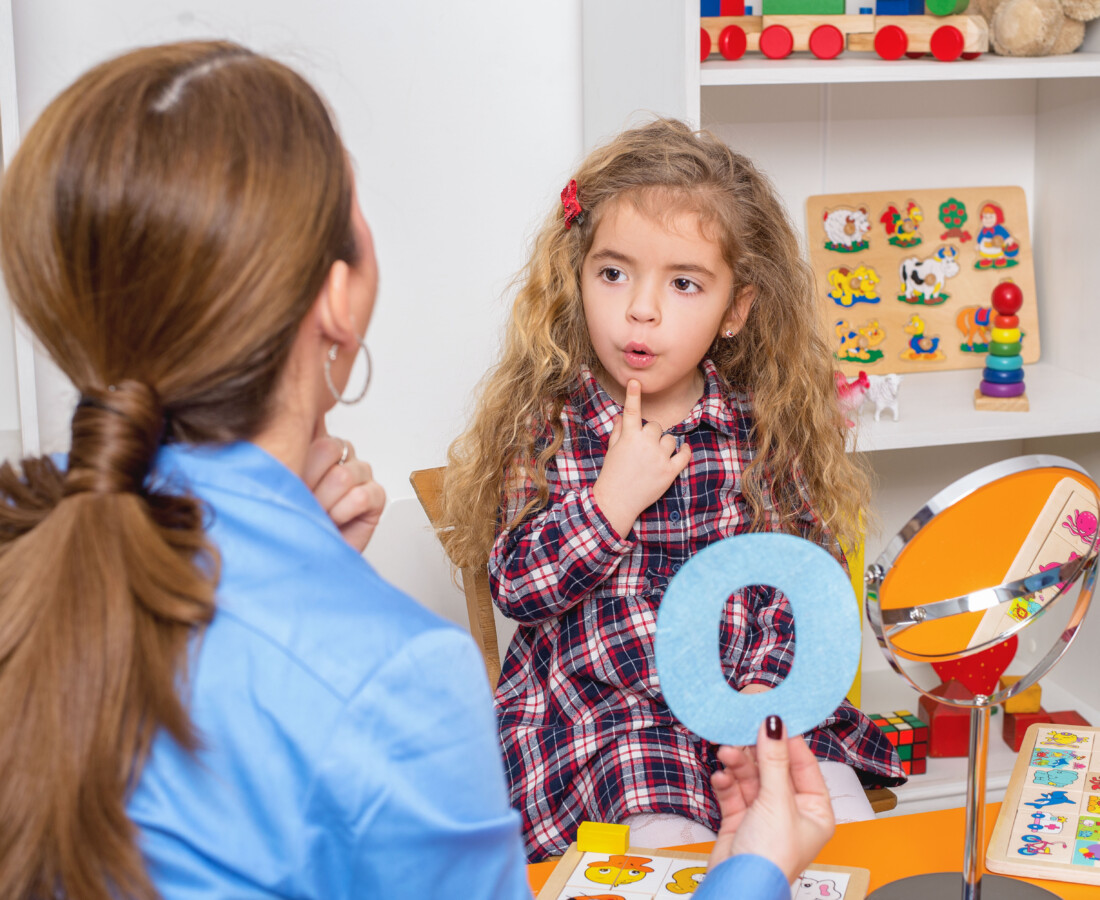Overview
Start your journey to get your speech-language pathologist degree
Are you passionate about helping others communicate? Do you want to have a positive impact on people with speech and language impairments? UVM’s fully online 22-credit Speech-Language Pathology Pre-Master’s Track Certificate Program (SLP Pre-Master’s Track) is designed for students interested in pursuing a Master of Science in Communication Sciences and Disorders, with a concentration in Speech-Language Pathology, but do not have the required undergraduate coursework to matriculate.
UVM’s speech-language pathologist program will catch you up on the courses you need to apply for a Master’s degree.
The SLP Pre-Master’s Track consists of six online prerequisite courses necessary for admission to the UVM Master of Science (MS) in Communication Sciences and Disorders (CSD) and to many other similar graduate programs.
You can find information regarding SLP licensure on ASHA’s website here.The American Speech-Language-Hearing Association (ASHA) non-CSD prerequisites, if not already completed, are recommended to be taken prior to enrolling in the UVM master’s program. These courses are required prior to enrolling in most universities’ graduate programs in SLP and include Biology, Physical Science, and Social Science. Read more about these prerequisites.
What sets UVM apart
Prepare for the Next Step in Your Career
Once you complete this pre-master’s speech-language pathologist program, you can apply to UVM’s Masters in Communication Sciences and Disorders program or other communication science programs. Find out more here.
Learn Online on Your Schedule
Complete the program with the flexibility of online learning. Students typically finish in three semesters by taking two online courses each term.
In-State Tuition for Everyone
Education should be accessible for everyone. No matter where you’re from, you’ll pay the in-state tuition rate, making UVM’s program one of the most affordable.

Launching Careers in Communication Sciences and Disorder
You’ll benefit from the guidance of expert faculty and their connections in the field of CSD as you make the next move in your career.
- 15+ year track record preparing students for careers in CSD
Admissions
Requirements to Complete the Speech-Language Pathology Master’s Track Course Sequence
- Applicants must have a bachelor’s degree and a GPA of 2.75 or higher (cumulative or last 60 credits).
- Admitted certificate students must maintain a minimum GPA of 2.0 or above to remain in the program.
- You may have no more than two prerequisite courses remaining for the spring and summer semesters when you apply for the UVM Master’s program.
- In addition, most graduate programs require that the applicant must have demonstrated knowledge of the biological sciences, physical sciences, statistics, and the social/behavioral sciences. Applicants to UVM’s Master’s program must also have 25 observation hours with an American Speech-Language-Hearing Association (ASHA) certified speech language pathologist prior to the graduate program start date.
Curriculum
Required Courses for SLP Pre-Master’s Track
- CSD 1220: Introduction to Phonetics
- CSD 1230: Linguistics for Clinicians
- CSD 1940: Development of Spoken Language
- CSD 2010: Speech and Hearing Science
- CSD 3810: Cognitive Neuroscience
- CSD 3710: Audiology
- STAT 1110: Elements of Statistics
SLP Pre-Master’s Track Sequence of Online Course Work
The following is a breakdown of when the seven SLP Pre-Master’s Track courses are offered. This is not the course sequence; you may start the program in either spring or fall term.
Spring
- CSD 1220: Intro to Phonetics (3 credits)
- CSD 2010: Speech and Hearing Science (4 credits)
Summer
- CSD 3710: Audiology
- CSD 3810: Cognitive Neuroscience (3 credits)
- STAT 1110: Elements of Statistics (3 credits)
Fall
- CSD 1230: Linguistics for Clinicians (equals LING 080: Intro to Linguistics offered in summer) (3 credits)
- CSD 1940: Development of Spoken Language (3 credits)
Course Descriptions
Courses are three credits unless otherwise noted.
CSD 1220: Introduction to Phonetics
Linguistic, acoustic, and articulatory phonetics applied to the description of speech. Stresses use of the International Phonetic Alphabet with English, foreign languages, and disordered speech.
CSD 1230: Linguistics for Clinicians
Linguistic concepts, applications to clinical contexts. Topics include language components, language processing in the brain, individual differences and disorders, dialects, normal and disordered language acquisition.
CSD 1940: Development of Spoken Language
Speech and language acquisition interpreted in light of current learning and cognitive theory, linguistic theory, and methods of linguistic analysis.
CSD 2010: Speech & Hearing Science
Structure and function of the respiratory, phonatory, articulatory, and hearing systems, coupled with models of speech and hearing as part of human communication. 4 credits.
CSD 3810: Cognitive Neuroscience
The structure and organization of the human central nervous system as related to higher cognitive and linguistic behaviors. Prerequisite: For Communication Sciences & Disorders majors, a college level Human Biology course such as BIOL 004 or ANPS 019. For other majors, any college level Biology course.
CSD 3710: Audiology
Survey of hearing and the nature and causes of hearing impairment. Includes an orientation to assessment procedures and rationales, hearing screening and counseling considerations. Prerequisites: CSD 2010
STAT 1110: Elements of Statistics
Basic statistical concepts, methods, and applications, including correlation, regression, confidence intervals and hypothesis tests.
Career Outlook
Join a fast-growing industry
When you get a speech-language pathologist degree, you’ll be in high demand.
According to the Bureau of Labor Statistics, “Employment of speech-language pathologists is projected to grow 21 percent from 2021 to 2031, much faster than the average for all occupations.”According to American Speech-Language-Hearing Association (ASHA) Member surveys, the salaries of speech-language pathologists vary depending on education, experience, work setting, and geographical location, with median salaries ranging from $66,000 to $80,000 in school settings and a median salary of $78,000 for health care settings, with a median salary of $100,000 for administrators or supervisors.
“A career in this field would be incredibly fulfilling and I believe this program will prepare me with the necessary skills to begin a journey toward becoming a speech-language pathologist.”
Anna Castagna, UVM Pre-Master SLP Student
Where SLPs work
According to the ASHA member data from 2022, clinical service providers made up 75.3 percent of all SLPs employed full-time or part-time. More than half (50.4 percent) of SLPs work in schools. The remainder work in either health care settings (39.6 percent) or colleges/universities (2.5 percent).

Increase your earning potential
Communication Sciences Disorders professionals earn
- Nearly 2X the median annual wage for all workers*
FAQ
General Information
SLP’s hold a master’s degree in speech-language pathology. They undergo extensive academic and clinical coursework. They are able to diagnose and treat a variety of communication disorders. SLPA’s have varying levels of education and training. Requirements vary state by state. Some states require an associate’s degree or completion of specific training programs or certifications.
We do not accept transfer credits for the SLP or SLPA programs. All courses must be taken at UVM in order to earn your certificate. If you took prior courses at UVM they will count toward completion of either program along with a certificate. However some applicants do apply with the intent to take just the courses they need in order to apply to a Master’s program or seek SLPA certification in their home state. This is fine but a certificate of completion will not be issued. If you are planning to apply to a Master’s program at another institution, it is incumbent upon you, the prospective student, to check with your intended college or university’s prerequisite requirements. This will ensure that UVM prerequisites, and this particular online course sequence, meet the requirements for admission, as requirements vary from institution to institution.
Here is the student financial services link which explains registration dates and billing due dates.
UVM is fully accredited by the New England Association of Schools and Colleges (NEASC). The courses you will take through this program are mostly 3‐credit undergraduate courses, transferrable at the discretion of the receiving institution.
If you already have completed many of these courses and/or clinical work and you wish to complete ASHA’s suggested requirements for SLPA training, you may register for courses in the SLPA sequence if there is room, but a certificate will not be issued. Similarly, if you are lacking some prerequisite courses for entering a Master’s program, on a space-available basis, you may be able to take some of our courses that serve as prerequisites for graduate programs. Again, a certificate will not be issued.
For more information about the UVM Communication Sciences and Disorders graduate program in Speech-Language Pathology, please call (802) 656-3861 or email cnhsgrad@uvm.edu.
If you are interested in pursuing a Master’s in Communication Sciences and Disorders upon completion of the Speech-Language Pathology Assistant sequence, please see the Department of Communication Sciences and Disorders website for information about the graduate program and the application process.
UVM’s MS in Communication Sciences and Disorders is not an online degree and requires a separate application. The Graduate Program Coordinator can be reached at 802-656-3858 or cnhsgrad@uvm.edu.
If you are planning to apply to a Master’s program at another institution, it is incumbent upon you, the prospective student, to check with your intended college or university’s prerequisite requirements. This will ensure that UVM prerequisites, and this particular online course sequence, meet the requirements for admission, as requirements vary from institution to institution.
Courses will be offered in fall, spring and summer for the SLP Pre-Master’s program. If you choose to take the courses necessary to become an SLPA, the preferred semester in which to begin this program is spring. Please inquire with an advisor for an alternative program plan.
Students typically complete the program in three semesters by taking two online courses each term.
Prior knowledge of speech-language pathology is not required.
Yes. You may access the online courses from outside of the US.
Always check with the UVM Bookstore for current class texts. You can look up required readings and books by entering the course number on the bookstore’s website. You may also research availability on Amazon and other publishing outlets.
Please go to this link for information about UVM’s Learning Management System, Brightspace.. There you will find information to help navigate the Brightspace environment.
Each instructor will state all of their requirements in the course syllabus.
Workload and Schedule
Taking two courses per term is what we recommend, and it is basically how the courses are offered. It is not possible to complete either program in two terms due to the sheer volume of work and the way the courses are offered on a rotating basis in specific terms. Expect to spend 8 to 10 hours per week per course. While the courses are online and your work time can be somewhat flexible, we recommend setting aside some time daily to work on assignments, respond to discussions and do the readings.
Yes. You will receive a certificate for completing the SLPA program with the required number of courses, observation hours and clinical hours. You will receive a certificate of completion for taking all six prerequisite courses for the SLP Pre-Master’s program.
Please submit this completion form after you have received your final grades for the program. Once your request has been reviewed and successful completion of the program has been confirmed, a certificate of completion will be emailed to you.
Admissions
For information about Professional and Continuing Education tuition and financial aid, please visit Student Financial Services. Summer tuition is offered at a discounted rate and can be found here.
Those accepted into the SLP Pre-Master’s Track cohort pay the academic year in-state tuition rate for prerequisite courses (online version only) regardless of residence while completing those courses.
Financial aid is available for students taking all six courses in the SLP Pre-Master’s Track required for graduate admission to UVM.
We require copies of your unofficial transcripts.
Applicants must have a bachelor’s degree and a GPA of 2.75 or higher (cumulative or last 60 credits).
Complete a brief online application form
Payment for the program happens on a course-by-course basis with the tuition bill arriving in your UVM email so please check email often.
If you miss 2 semesters of coursework your program account will become “inactive” and you would need to contact us for re-activation.
Limited Federal Stafford Loan funding may be available. Contact your advisor for details. Cohort members pay tuition at the UVM in-state rate and may view exact charges on the Student Financial Services website.
Getting started:
- Complete the FAFSA online.
- Watch for an email notifying you of outstanding requirements on your account. Once you receive the email, access your student account and complete the Non-Degree Certification (Intent to Enroll) requirement.
The University of Vermont is able and prepared to certify VA benefits for the SLP Pre Masters Track. If you intend to use VA benefits for this program, please apply to the program and contact UVM’s Veterans Affairs Coordinator, David Carlson, via email at veterans@uvm.edu.
Tuition bills are sent to each student via email to their UVM email account, generally within 3-4 weeks of having registered for courses. Billing issue and due dates may be found here.
You may drop a course during the first two weeks of the fall or spring term and receive a full refund of tuition. After that, the amount decreases to 75% and eventually 25% before all refund amount deadlines have been exhausted. In summer, due to the abbreviated nature of the courses, you have the first two days of the course to drop it and receive a full tuition refund. More information about add/drop dates may be found under each semester’s calendar here.
SLPA Specific Questions
If you need help finding licensed SLPs in your area, please check with Darin Woolpert at darin.woolpert@uvm.edu
No, there is currently no licensure for SLPAs in Vermont. Some states do have licensure for SLPAs. Please check with your own state’s Department of Education or Department of Health or the ASHA website for state requirements for SLPA training. Currently, each state is responsible for deciding its own requirements. The American Speech/Language and Hearing Association (ASHA) provides an option for national certification for SLPAs.
You will be given a certificate of completion, which documents that you took UVM courses totaling 22 credits and completed 25 observation hours plus at least 100 clinical fieldwork hours. This sequence of courses and experiences follows the SLPA training guidelines delineated by ASHA. Please submit this completion form after you have received your final grades for the program. Once your request has been reviewed and successful completion of the program has been confirmed, a certificate of completion will be emailed to you.
In order to become a licensed SLP you need to complete the Masters in Communication Sciences and Disorders plus a Clinical Fellowship Year. Find out more here.
Forms and Licensure
Information regarding licensure by both the State of Vermont and the American Speech-Language-Hearing Association (ASHA), are linked here. Please be aware that it is your responsibility to check with your state’s Department of Education for licensure requirements, since they vary from state to state. Forms you’ll need to complete for the SLPA program are also linked.
Advising and Student Support
You have the goal; we’ll help you achieve it
We are dedicated to helping you access UVM. It is our role to get to know your experience and goals, assist you in choosing courses, guide you through registration, and serve as your resource throughout your time at UVM.
Curious if your past college credits apply at UVM? Want to understand where a program will take you after completion? Looking for resources for financial aid, tutors, or UVM policies? We’re here to help.


